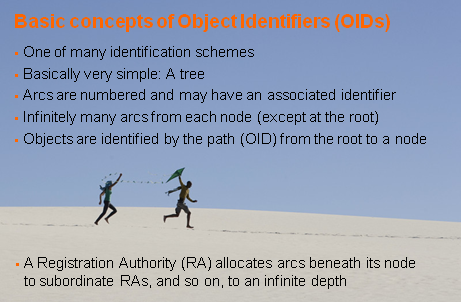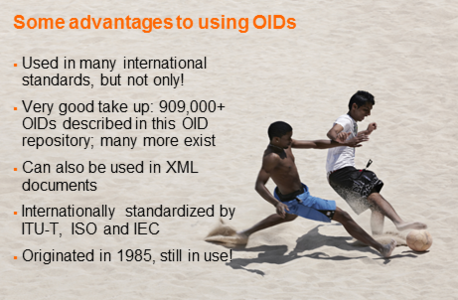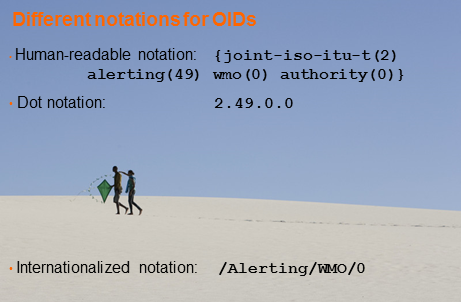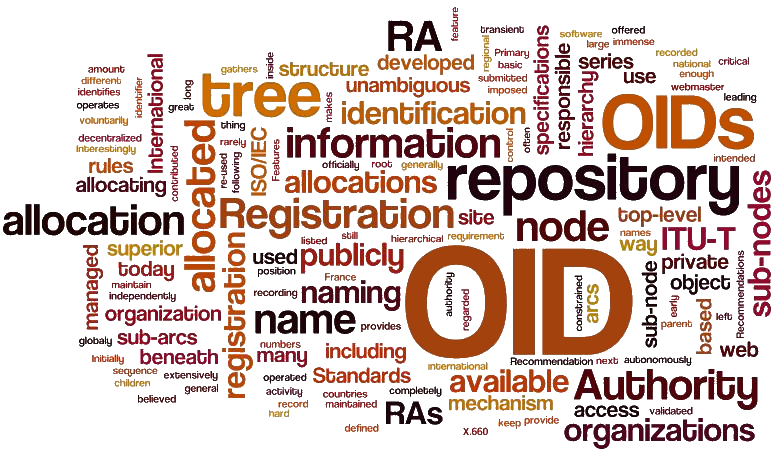|
An object identifier (OID) is an extensively used identification mechanism
jointly developed by ITU-T and
ISO/IEC
for naming any type of object, concept or "thing"
with a globally unambiguous name which requires a persistent name (long
life-time). It is not intended to be used for transient naming. OIDs,
once allocated, should not be re-used for a different object/thing.
It is based on a hierarchical name structure based on the "OID
tree". This naming structure uses a sequence of names, of which
the first name identifies a top-level "node" in the OID tree,
and the next provides further identification of arcs leading to sub-nodes
beneath the top-level, and so on to any depth.
A critical feature of this identification mechanism is that it makes
OIDs available to a great many organizations and specifications for
their own use (including countries, ITU-T Recommendations, ISO and IEC
International Standards, specifications from national, regional or international
organizations, etc.).
|
|
 Random OID Random OID
 OID flyer OID flyer
 OID handbook OID handbook
 Frequently Asked Questions (FAQ) Frequently Asked Questions (FAQ)
  OID helper OID helper
|














 Display the number of OIDs in the repository
Display the number of OIDs in the repository Display the most populated OID arcs
Display the most populated OID arcs
 Introduction to OIDs
Introduction to OIDs
 OID registration standards
OID registration standards 
 Features offered by this OID repository
Features offered by this OID repository 
 OID helper
OID helper